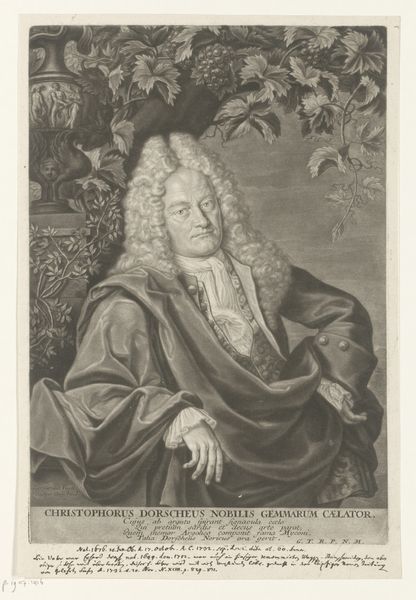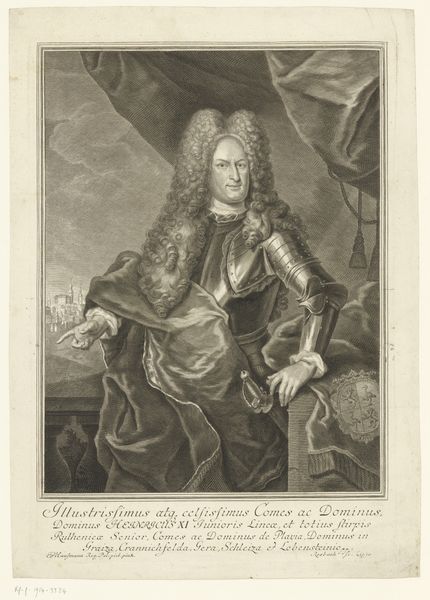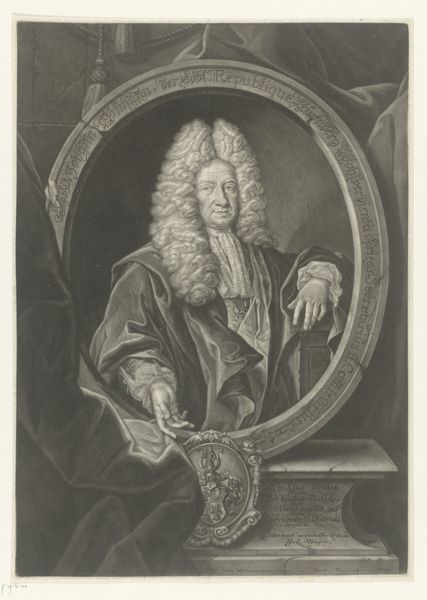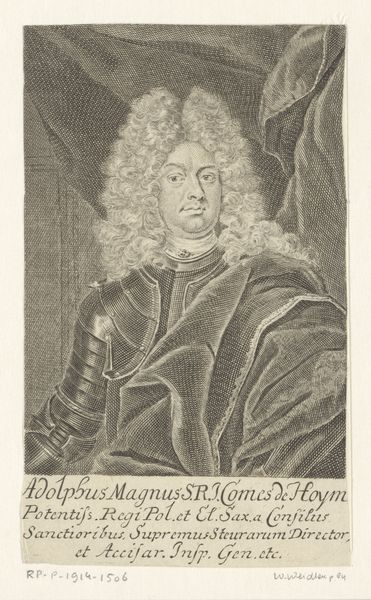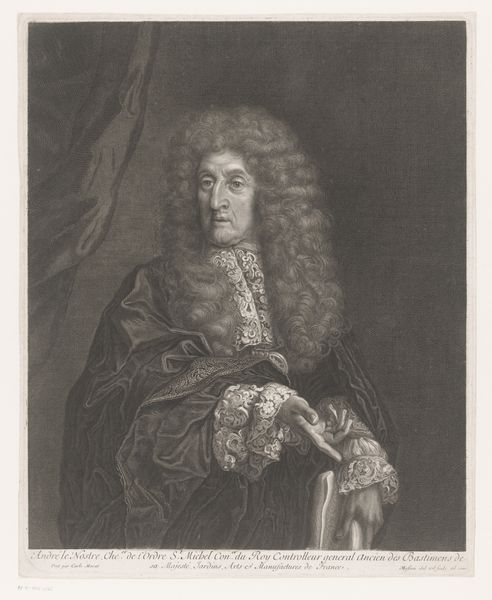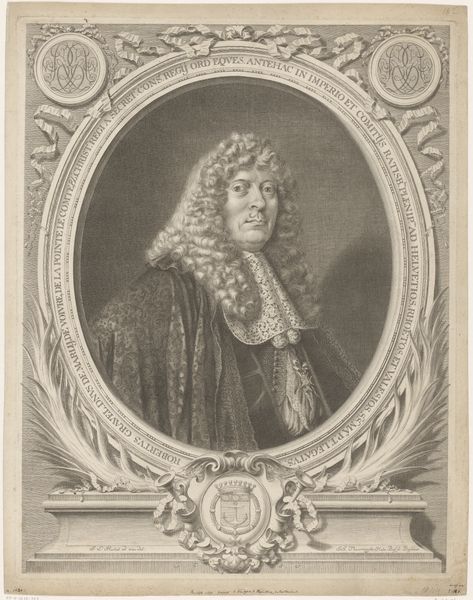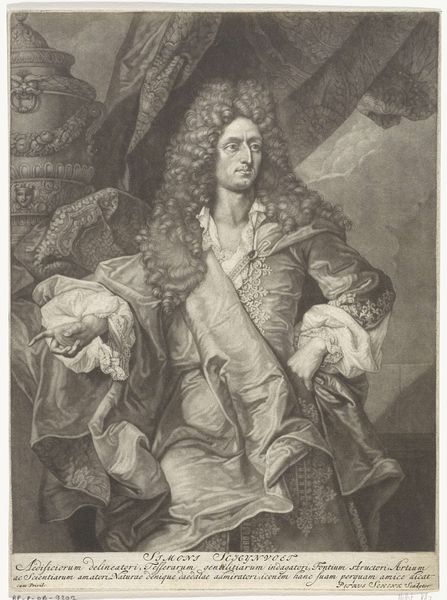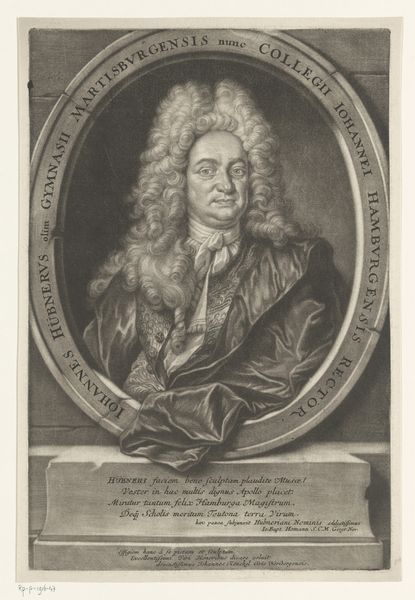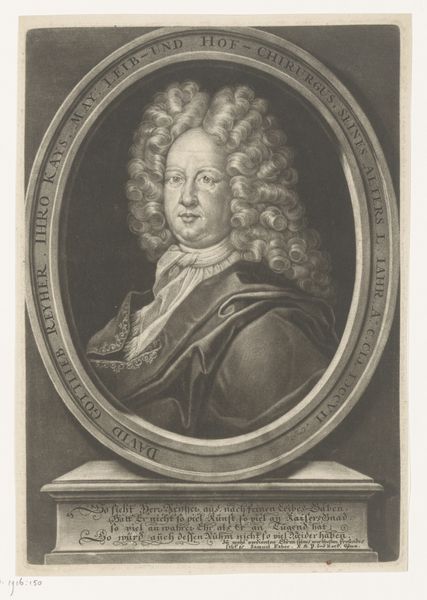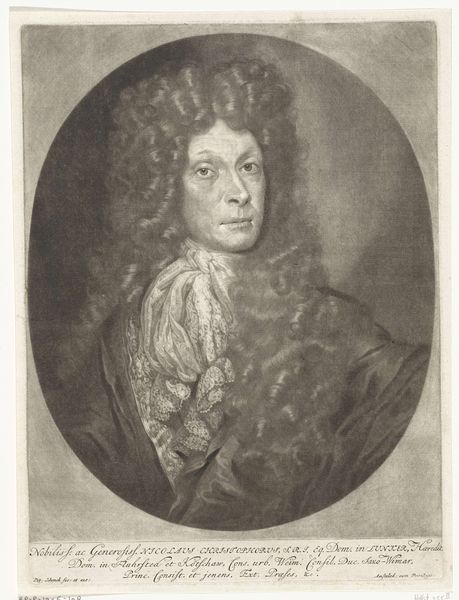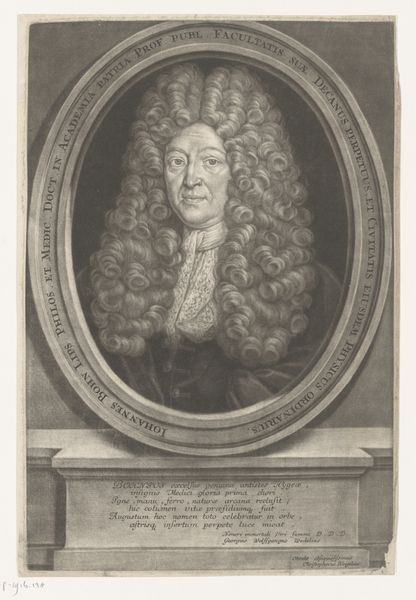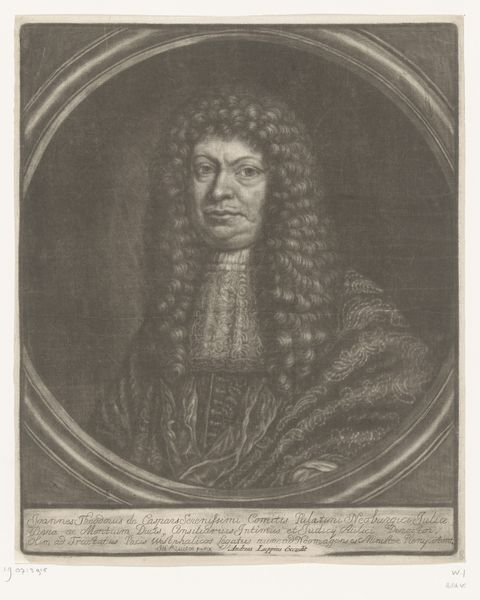
print, metal, etching, paper, engraving
#
portrait
#
pencil drawn
#
baroque
# print
#
metal
#
etching
#
pencil sketch
#
old engraving style
#
charcoal drawing
#
paper
#
charcoal art
#
portrait reference
#
pencil drawing
#
portrait drawing
#
engraving
Dimensions: height 198 mm, width 151 mm
Copyright: Rijks Museum: Open Domain
Editor: This engraving, "Portret van Jacob de Wilde," likely created between 1658 and 1736 by Martin Mytens, depicts a man holding a small round object. It's amazing how much detail they could get with just lines etched on metal. How would you interpret this work, looking beyond just the surface representation? Curator: What strikes me is the means of its production. This wasn't painting for the elite; prints like this, made using metal and paper, allowed wider circulation of images. Consider the labour involved in etching the metal plate versus, say, commissioning an oil painting. Who had access to these prints and how were they consumed? This informs the portrait's purpose more than individual expression. Editor: So, the value lies in its accessibility and production, not necessarily the sitter’s identity? The description does mention that Jacob De Wilde studied antiquities and held position on the board of directors for the East India company in Amsterdam. He clearly belonged to the upper class. Curator: Precisely! While Jacob de Wilde’s social standing is undeniably part of the picture, examining the *process* broadens our understanding. Look at the deliberate, repeated labor of creating this print. Engraving wasn't just a reproductive technique, it was skilled labor shaping and disseminating visual information within a specific socio-economic context. Think of the print shop itself—a site of labor and potential social exchange. Editor: I hadn’t considered the print shop itself. So you're saying that by analyzing the materials and how they were used, we learn about a wider society and how images were consumed and distributed, not only about Mr. De Wilde himself. Curator: Exactly! This work allows us to question traditional boundaries between art and craft and brings attention to the societal infrastructure that sustains the image, rather than the sitter's wealth. Editor: I see! Viewing the portrait in relation to production and consumption really does make me think about it differently. Curator: It re-contextualizes not just the artwork, but also how we value labor and distribution.
Comments
No comments
Be the first to comment and join the conversation on the ultimate creative platform.
